A million city and probably Colombia’s most popular destination, Cartagena is steeped in beauty, mystery, and tropical heat. This beachside city has a colonial flair. The brightly coloured houses of the old town are decorated with flowers and greenery. It’s in contrast with the modern architecture of Boca Grande and Castillo Grande that has grown out of its walls. Even more, the Getsemani district is just about the coolest neighbourhood in Colombia. And let’s not forget to mention that a port, fortresses and a group of monuments of Cartagena are included in UNESCO World Heritage list. Interested? Read on!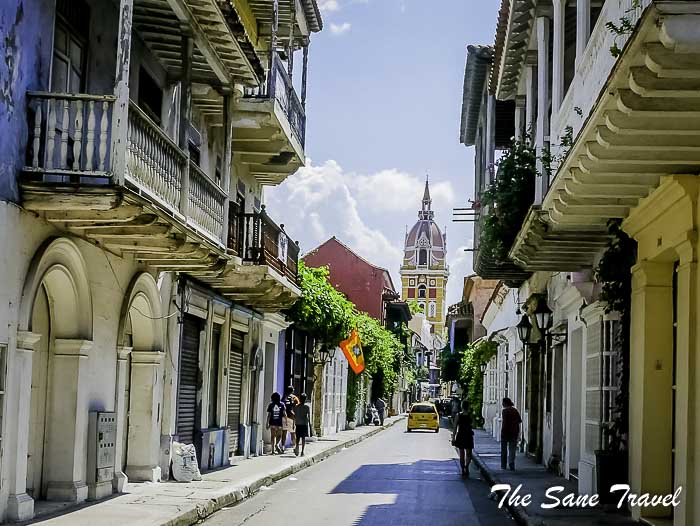
Cartagena de Indias was founded under the Spanish Empire in the early 16th century and took its name from the Spanish city of Cartagena. Sometime later, the Spanish crown named Cartagena as a major port of all transatlantic sailing. For a long time, the city was an important link between Spain and South America. The Spaniards developed a defence plan of Cartagena that included building walled military fortresses to protect the city from pirates. These military forts are preserved until today. Cartagena’s ensemble of forts is not only the biggest in South America but also one of the best preserved.
I hope you have two days for visiting Cartagena and here are my suggestions on how to spend them.
Day 1
Start with seeing the memorials to two important historical figures before entering the Walled City.
The first is Rafael Núñez.
Memorial and home of Rafael Núñez
Just a short walk from the centre of Cartagena is the former residence of Rafael Núñez (1825-1894): poet, journalist, author of Colombia's National Anthem, creator of the National Bank, mastermind of its Constitution, and the only President of Colombia to have been elected four times. His residence is a grand old two storey Antillian Caribbean-style wooden mansion painted white with a green trim. Núñez called it his home for 17 years, and his wife Soledad Román Núñez lived there for 30 more years after his death. His famous motto, now painted above the entrance, was Regeneration, or Catastrophe. Rafael Núñez is buried alongside his wife, in a quaint little church opposite his house. If you came to Cartagena by plane, you already noticed that Cartagena airport bears his name.
Note: no photography is allowed inside the house.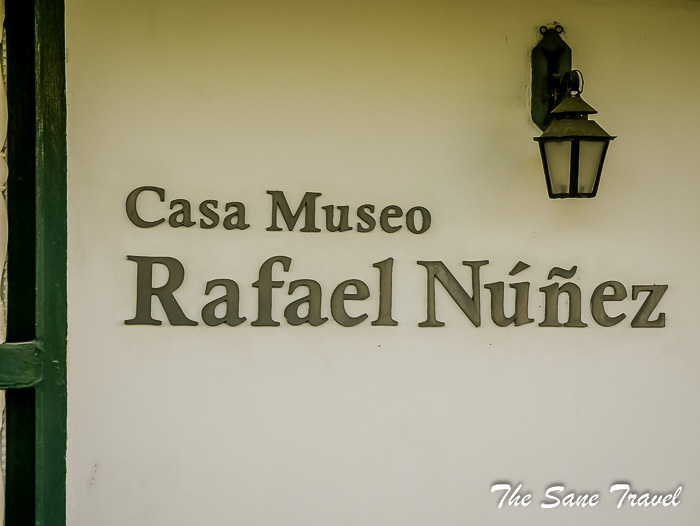
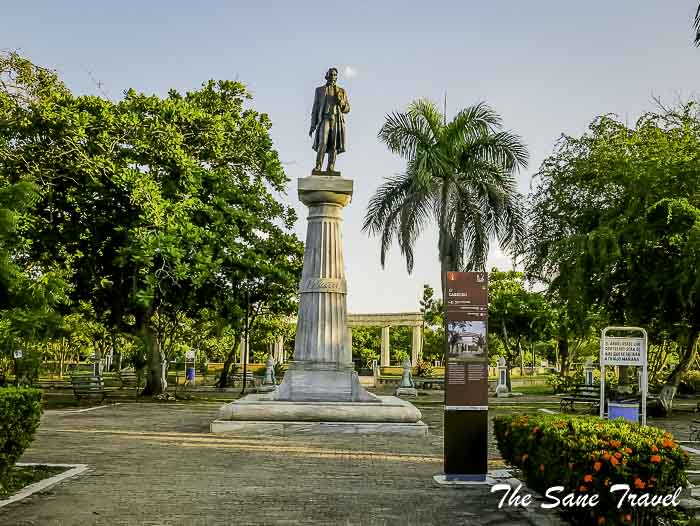
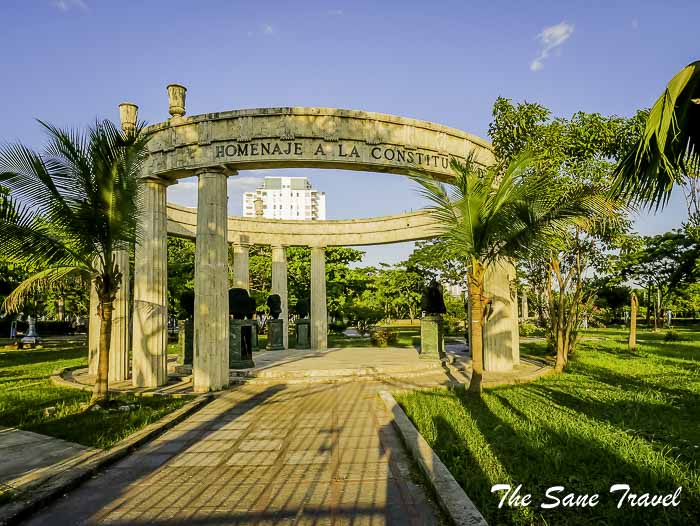
Address: Cra. 2 #41-89, Cartagena.
After a visit, head to the monument of India Catalina.
India Catalina
India Catalina has become the symbol of Spanish Colonial Cartagena. Her real name is lost to history but her story began in the early 16th century when attacks on coastal Colombia started. The young girl was taken hostage from the Calamari people and she lived as a slave and consort for twenty years. She was integrated into Spanish culture by her “host” family, learning the language and the religion. Later, she acted as an interpreter to founder of Cartagena Pedro de Heredia. The monument to India Catalina was sculpted by Eladio Gil Zambrana in 1974. Small scale replicas of India Catalina are used in the Cartagena Film Festival awards like a local Oscar. You can also buy one for yourself in of the many souvenir shops in Cartagena.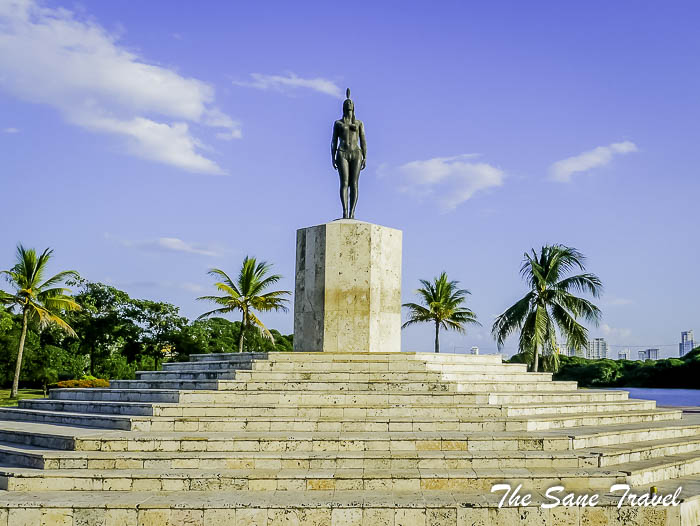
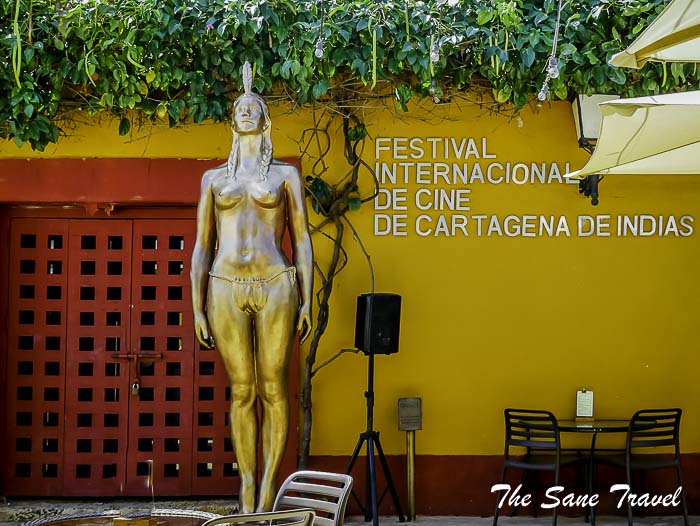
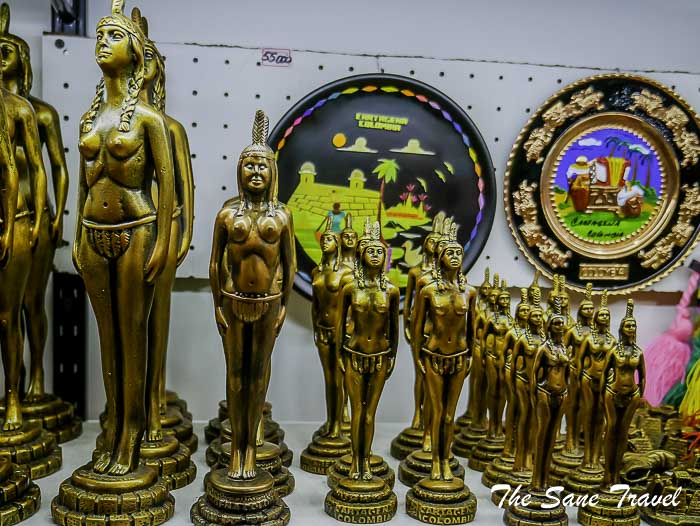 Address: Avenida Venezuela.
Address: Avenida Venezuela.
Then head to the Walled town on Calle 36 while you reach Coach Square in about ten minutes.
Coach Square
Hundreds of thousands of black slaves brought here from Africa were sold in this Plaza. Veracruz, Mexico and Cartagena were the only two official ports to trade slaves. The monument of Pedro de Heredia, founder of Cartagena de Indias in 1533, dominates Plaza de Los Coches. After a fire destroyed the early Cartagena, Pedro de Heredia declared that all future construction must be of stone, brick and cement, so that’s why we can see the old town today. To this time, Coach Square is a boarding area to tour the city in a horse drawn coach.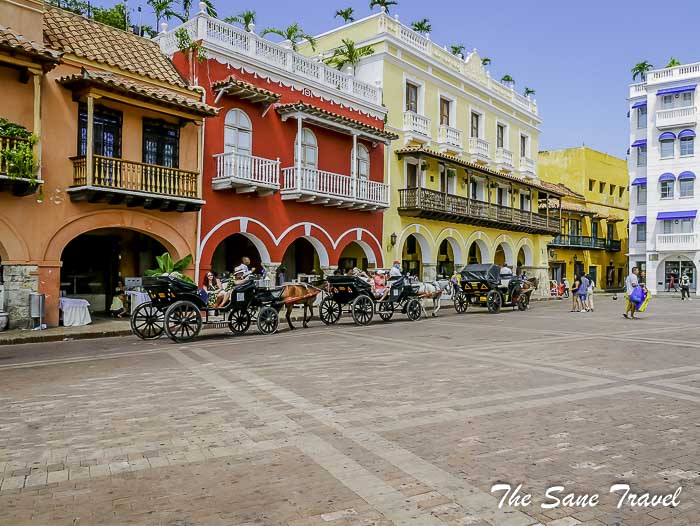
Nearby is San Pedro de Claver Square.
San Pedro de Claver Square
San Pedro de Claver was an advocate for better treatment of slaves and is oftentimes referred to as the saint of human rights. The church built in his honour is a gorgeous piece of architecture and has a pretty plaza in front of it. The plaza has a statue of him and his translator from African languages helping him to communicate with slaves.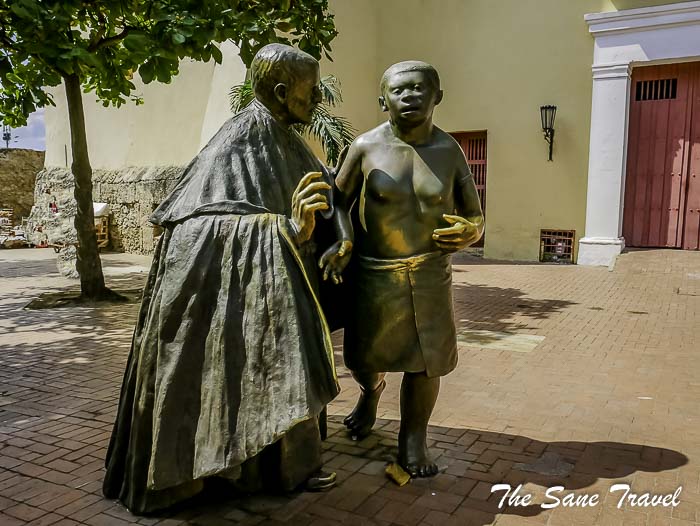
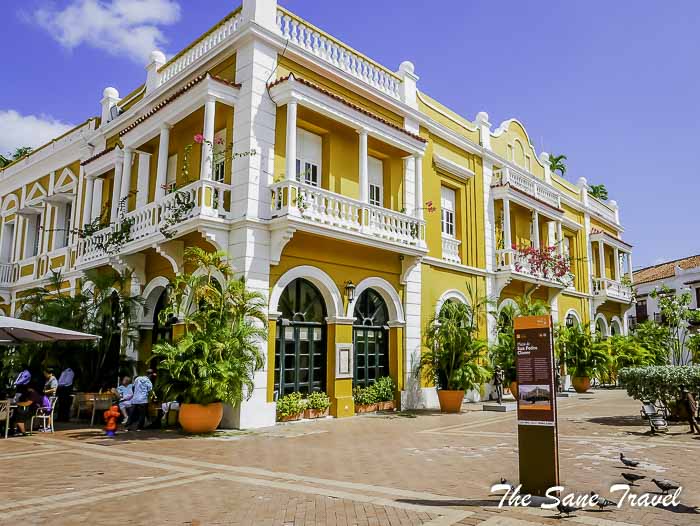 In a few minutes walk you are already in the Customs Square.
In a few minutes walk you are already in the Customs Square.
The Customs Square
The Customs Plaza contains a fine example of Colonial architecture. It is one of the largest and prettiest Plazas in Cartagena. Statue of Christopher Columbus, known in Spanish speaking countries as Cristobal Colón, is located there. Erected at the end of the 19th century. The symmetrically aligned arcades of the square once led to the House of the Aduana - Customs House. All merchandise entering and leaving through the Gate paid taxes here.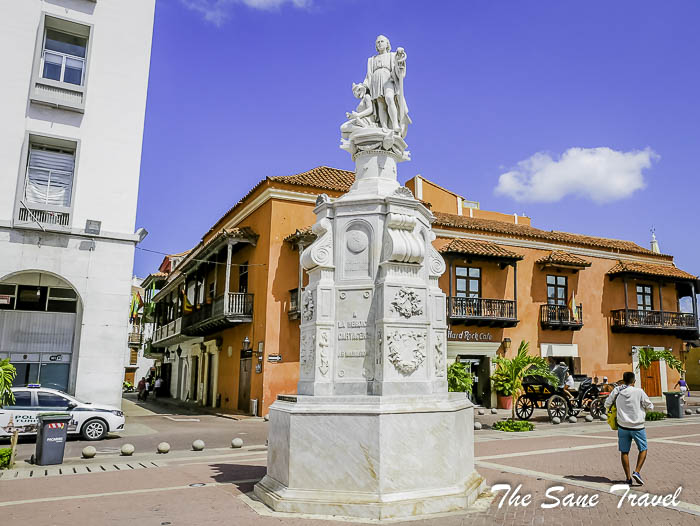
Clock tower
Cartagena's most famous landmark, The Torre del Reloj, or Clock Tower, built in 1601, was once the main gateway to the walled city. It links Getsemani to the Old Town. The tower was rebuilt in the late 19th century to house a pendulum clock, replaced in the early 20th century with a superior Swiss clock, which is still in operation today.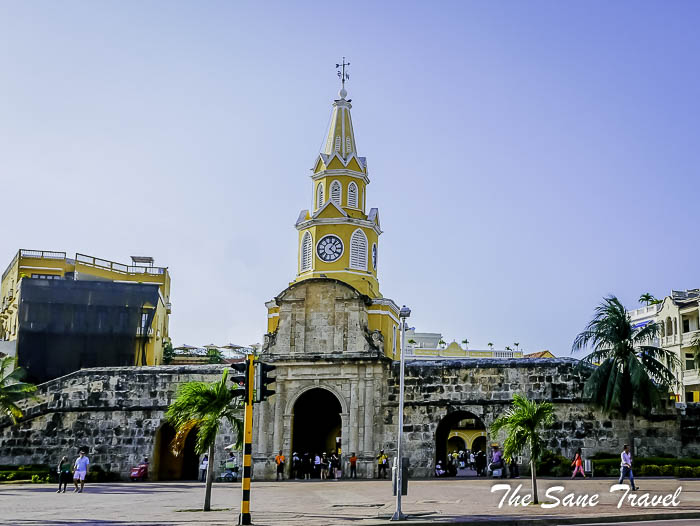
Palenquera women
One of the things you’ll soon notice on pretty much any street corner is brightly dressed women with giant silver bowls on their heads selling fruit. These Palenquera fruit sellers have become iconic in the city. Palenquera women come mostly from Palenque de San Basilio village. The villages were established as living places for escaping and freed slaves starting from the 16th century. Now, the Palenque de San Basilio is the only surviving Palenque and continues to be home to about 3,500 residents who are direct descendants from those African slaves. 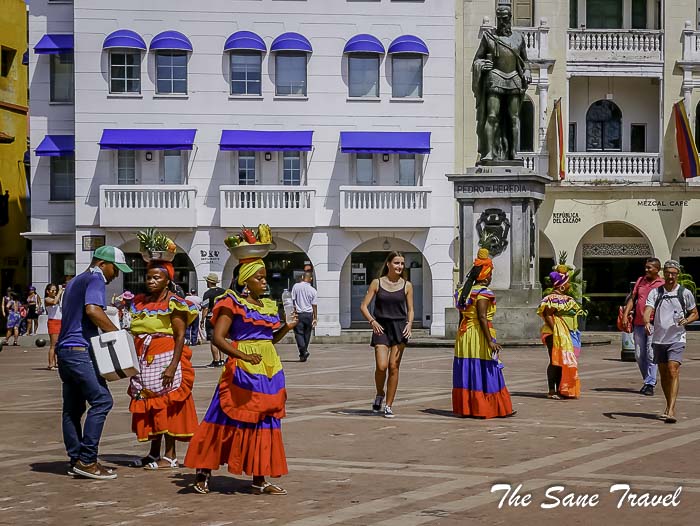
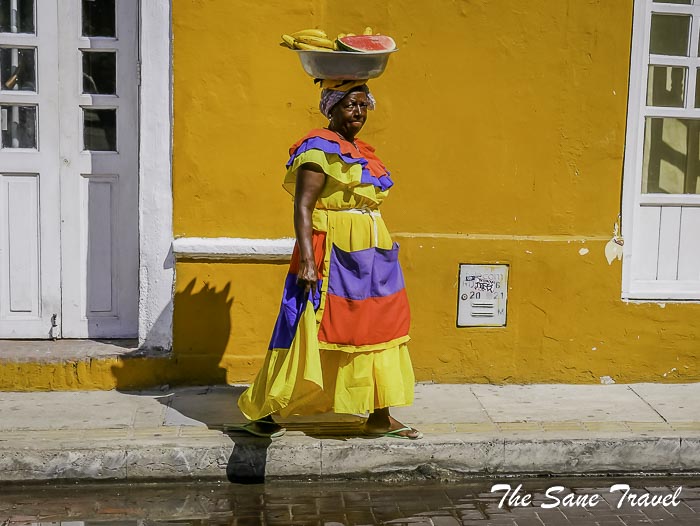
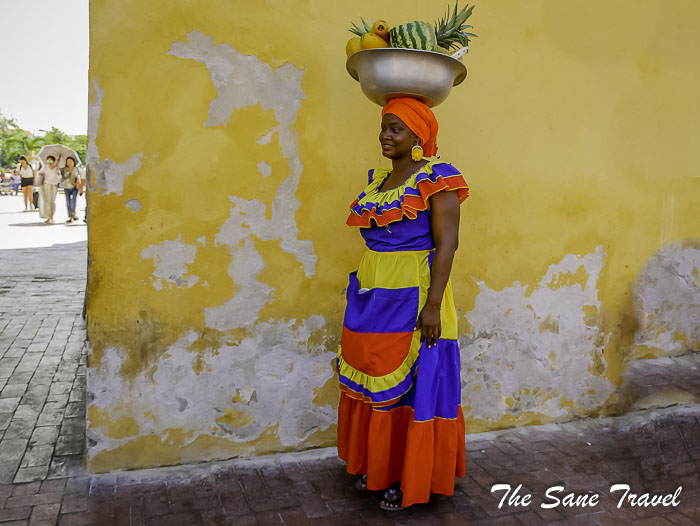 Just remember that taking photos of Palenquera fruit sellers is not free, at least when they see you doing that, so better negotiate the price before taking a picture as it may be more expensive than you think.
Just remember that taking photos of Palenquera fruit sellers is not free, at least when they see you doing that, so better negotiate the price before taking a picture as it may be more expensive than you think.
Bolívar Park
This recently renovated park located in the heart of the city is a local and tourist favourite. It was named after General Simon Bolivar who liberated the country in 1811. On the base of the Bolivar Statue, you can read: "Carthaginians: If Caracas gave me life, Cartagena gave me glory...". Simón Bolívar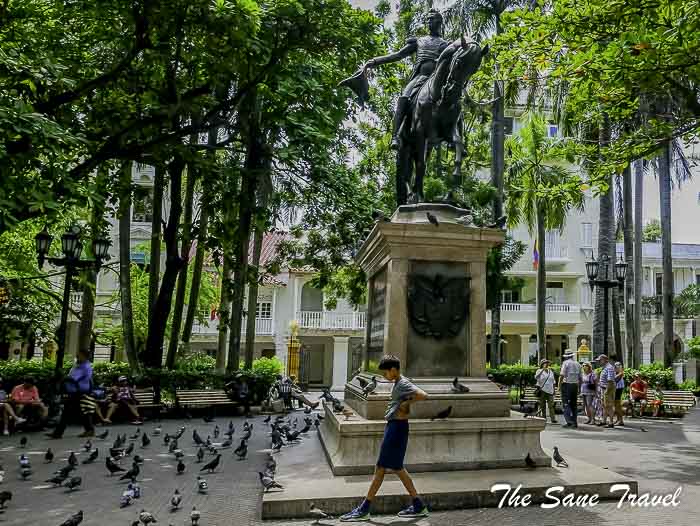
Inquisition Palace
During the colonial era, this house served as a tribunal "court" and tried anyone the Church viewed as a heretic. The palace contains instruments of torture, along with documents, paintings and explanations about the Inquisition. Outside, fronting Calle de la Inquisición is a small window from which the sentences of the tribunal were announced to the public.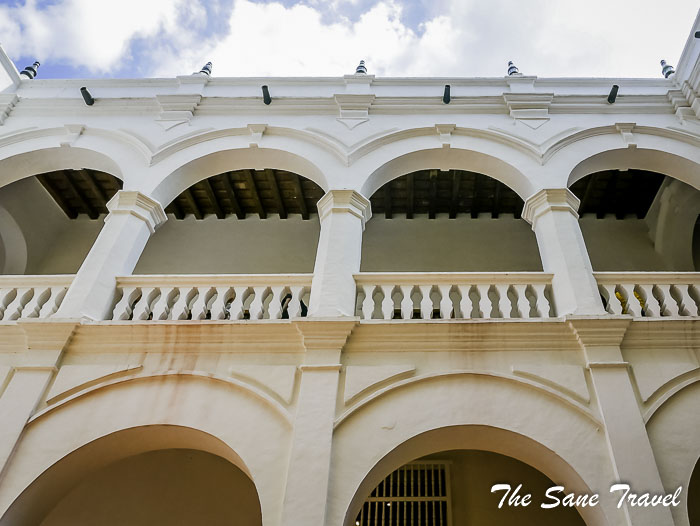
Cathedral of Cartagena
Officially designated as Metropolitan Cathedral Basilica of St. Catherine of Alexandria, this outstanding 16th century cathedral is more commonly referred to as the Cathedral of Cartagena. A dome of Cathedral can be seen from almost anywhere in the city centre and is a helpful landmark for those navigating Cartagena on foot.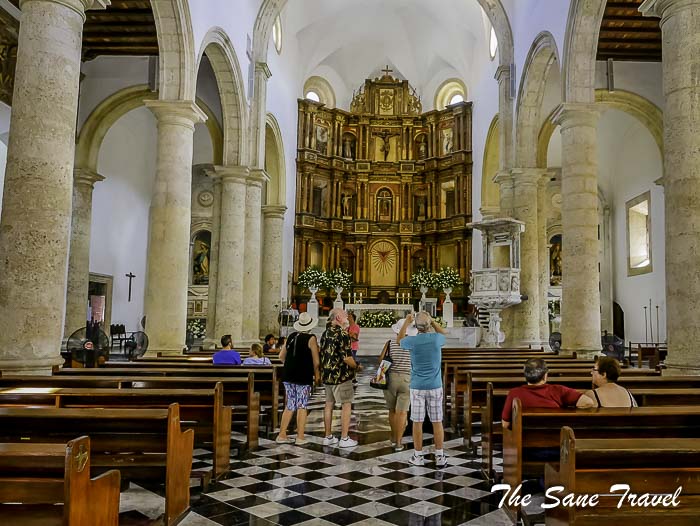
Reclining woman of Botero
In Plaza Santo Domingo (Santo Domingo Square) and in front of the restored Santo Domingo Church is the sculpture Mujer Reclinada by Fernando Botero. Fernando Botero is perhaps Colombia’s most famous artist. His sculptures are easily recognisable by his distinctive “fat” style. In Cartagena, his sculpture of a reclining, voluptuous woman is a landmark and many people want to have a picture with her. Botero donated the statue to the city in 2000.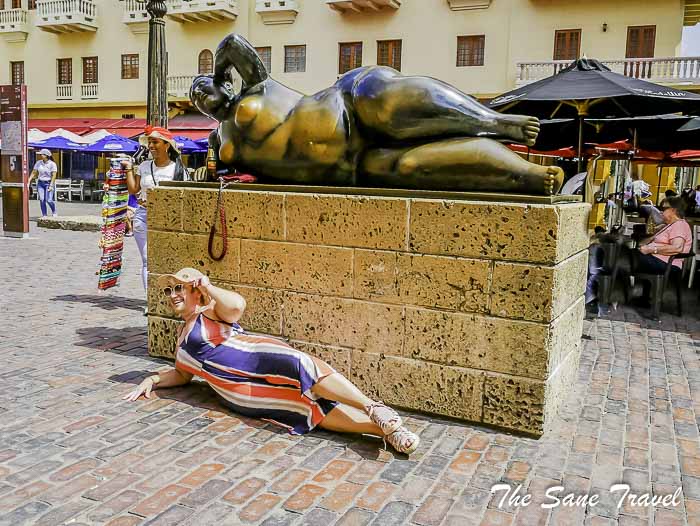 OK, you deserve a break. I recommend Ábaco Libros y Café.
OK, you deserve a break. I recommend Ábaco Libros y Café.
Ábaco Libros y Café
Located in one of the most beautiful corners of Cartagena de Indias, the crossing of the streets of the Mantilla and the Church, Ábaco Libros y Café is the perfect place to take a break in the tour of the walled city and have an iced coffee. Some say it’s the best in town. Ábaco Libros y Café is a perfect meeting point for the informal gathering of the city's intellectuals and visitors who can select books of their choice while sipping drinks in the atmospheric bookstore. 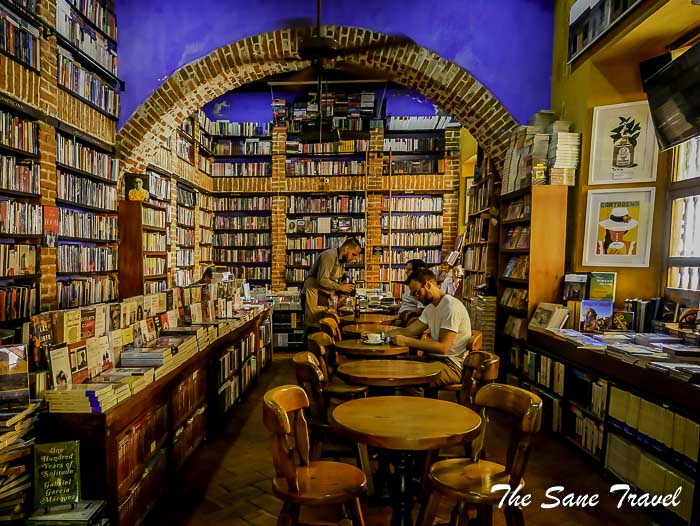 After you are on the street again, you are perfectly located to take one of the most iconic photos of Cartagena with colourful Cathedral dome in the background.
After you are on the street again, you are perfectly located to take one of the most iconic photos of Cartagena with colourful Cathedral dome in the background.
Address: Cl. 36 ##3-86, Cartagena.
Ready to go? Head to Heredia Theatre.
Heredia Theatre
In 1911, to celebrate the centennial celebration of the country’s Independence, the current building of the theatre was constructed over what were the ruins of the old church. Reconstructed in 1998, the Teatro Heredia (named for the founder of Cartagena) is one of the most beautiful theatres in all of the Americas. Excellent acoustics, computerized lighting, a 99 channel sound system, air conditioning and comfortable guest seating are all part of this first class facility. 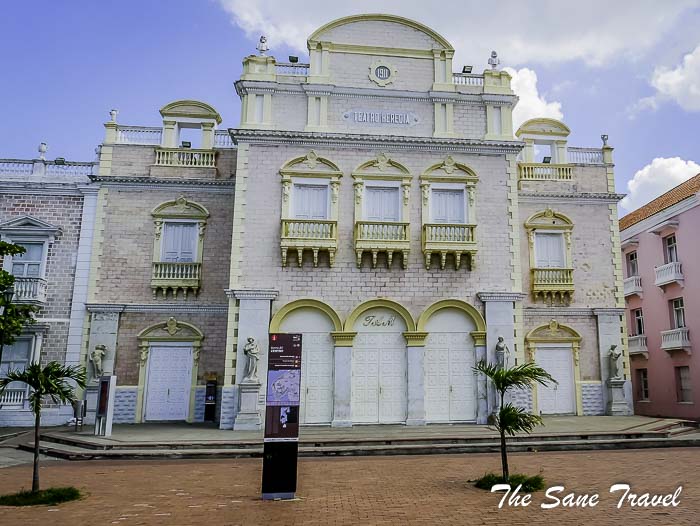 Address: Cr 4 # De La Merced 3638 Carrera 10 Centro
Address: Cr 4 # De La Merced 3638 Carrera 10 Centro
Gabriel García Márquez and Cartagena
Nobel Prize winner in literature, Mr García Márquez arrived in Cartagena in 1948 as a penniless student from Bogotá and left the next year, never to live in the city full time again. But his parents and siblings moved to Cartagena a bit later, so he continued to visit them after settling down in Mexico City. A part of his ashes was flown home in 2016 from Mexico where he had lived for years and where he died in 2014 at the age of 87. A bronze bust of the writer was erected in the centre of the cloisters of the University of Cartagena as the centrepiece of the memorial in his honour. The bust sits atop a commemorative stone, holding part of Garcia Marquez's ashes. The rest of the ashes will remain in Mexico.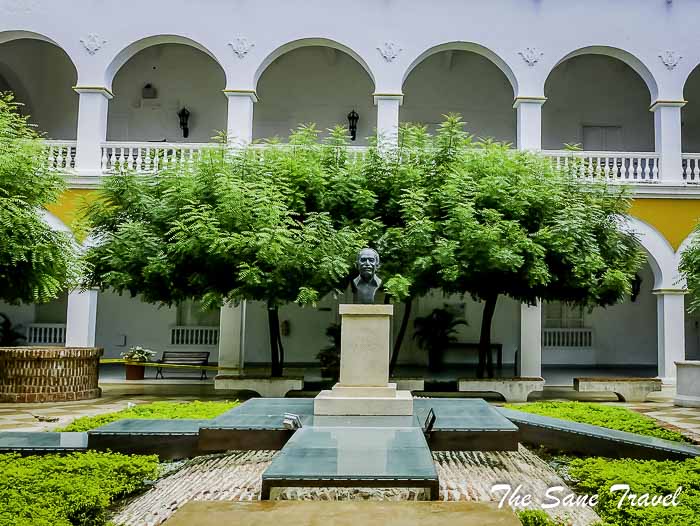
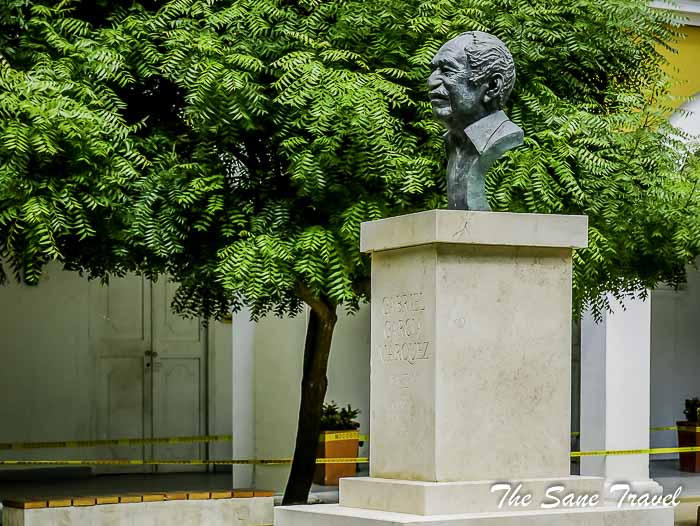
NOTE: for visiting, take the side entrance. Mention to the security guards that you are "Turistas", and you should have no problems entering.
Address: Carrera 4 #3840 Cartagena
After the Walled City tour take a well-deserved break at your hotel swimming pool in the late afternoon.
Day 2
First thing in the morning, buy a ticket for your sunset boat tour at the Cartagena Port. Then you are ready to head to La Popa hill.
La Popa
When a traveller approaches Cartagena, one of the first things that you can see from a distance is a hill called La Popa de la Galera.
In the sixteenth century, while Spanish philosopher and Augustinian Alonso de la Cruz was absorbed in meditation, he was told by mother Maria to build a monastery on top of the Popa de La Galera hill. The Convento de la Popa, now a famous tourist attraction, with a magnificent view of the city, is the result. The hill is steep so better take a taxi and go up the hill to visit the ancient monastery and soak in the awesome views of Cartagena.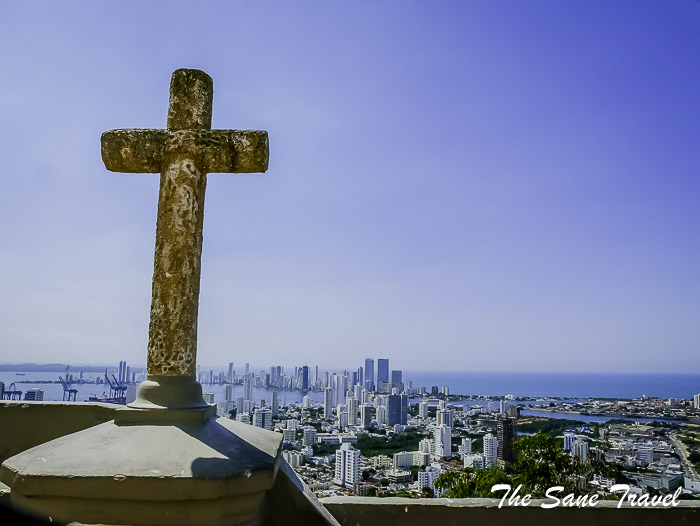
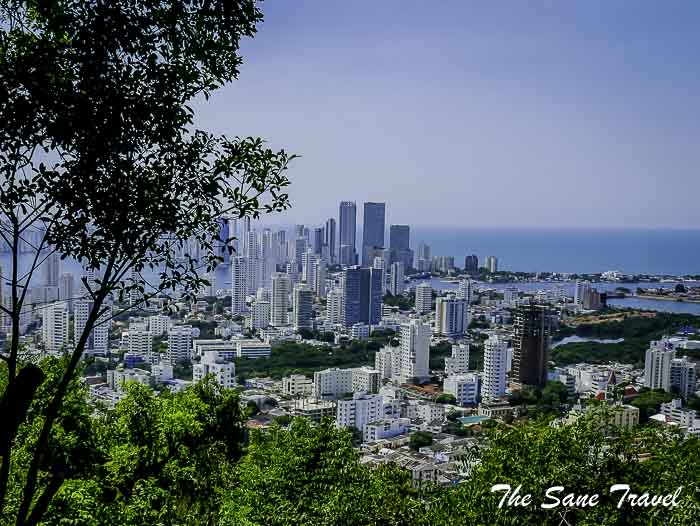
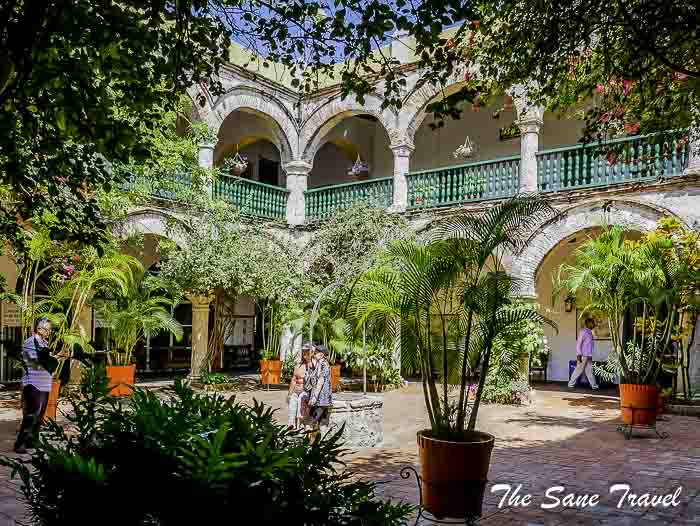 After you get back to the city, go visit the quirky Getsemani neighbourhood.
After you get back to the city, go visit the quirky Getsemani neighbourhood.
Getsemani
Getsemani has traditionally been populated by freed slaves, artisans, and merchants selling their crafts to their richer neighbours. Getsemani was once a haven for prostitutes and thieves. Not so long ago, it was a dangerous place, not safe for visiting. Now it’s a colourful neighbourhood where graffiti artists, sculptors, musicians, dancers, architects and backpackers all gather. The houses in Getsemani are not in such a perfect condition as the ones in the old town but it just adds charm to the place and allows street artists to show their talents. It is located just a short walk from Clock tower.
Calle 29 or Calle de la Sierpe
Street of the snake
In my opinion, the best way to enter Getsemani is taking Calle 29 next to the Parque Centenario. After crossing Calle 30, soon you will see a part of it that is decorated with flags of all countries. I even found several flags of my country Latvia. Let’s find yours!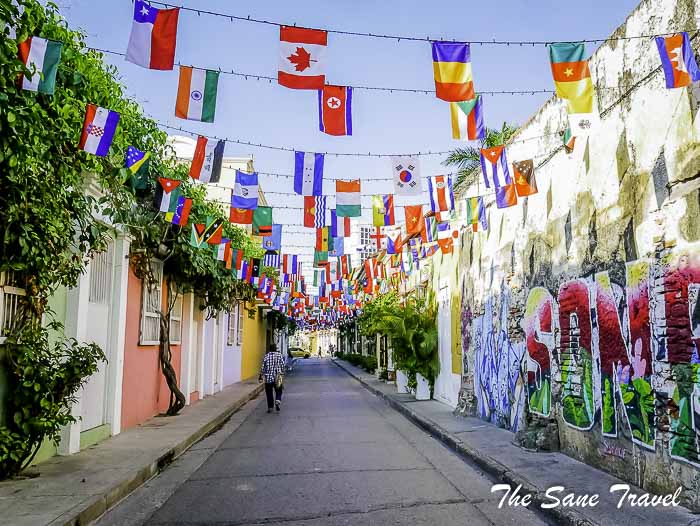 After the turn, the street looks quite different, with many interesting murals. As far as I understand, just this part of the street is called Calle de la Sierpe, or street of the snake.
After the turn, the street looks quite different, with many interesting murals. As far as I understand, just this part of the street is called Calle de la Sierpe, or street of the snake.
Legend has it that in old times, the dwellers of this street at night heard the noise of something dragging itself on the pavement and rattling like a snake. In 1608, the mayor of the city personally watched over the street one night to finally solve the mystery. Suddenly, out of nowhere, a huge and threatening snake appeared with fluorescent eyes, twisting and noisily rattling its tail. The mayor outlined some magical figures in the air and the snake became what it really was: a witch. Seeing herself lost, she asked for forgiveness but she was imprisoned and a few years later the Inquisition condemned her.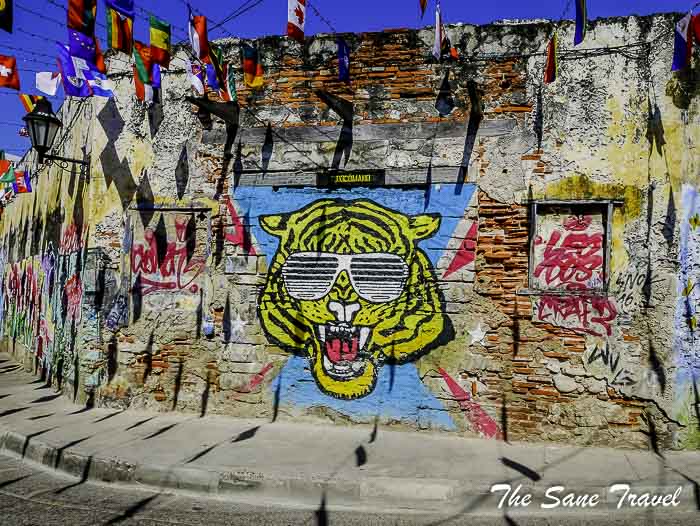
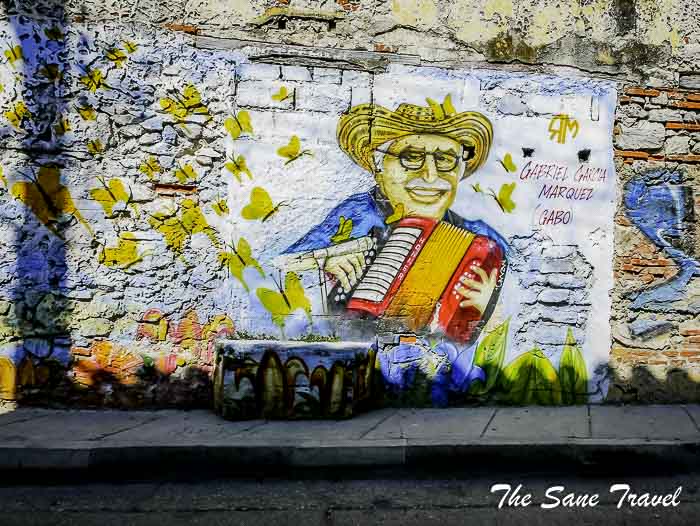
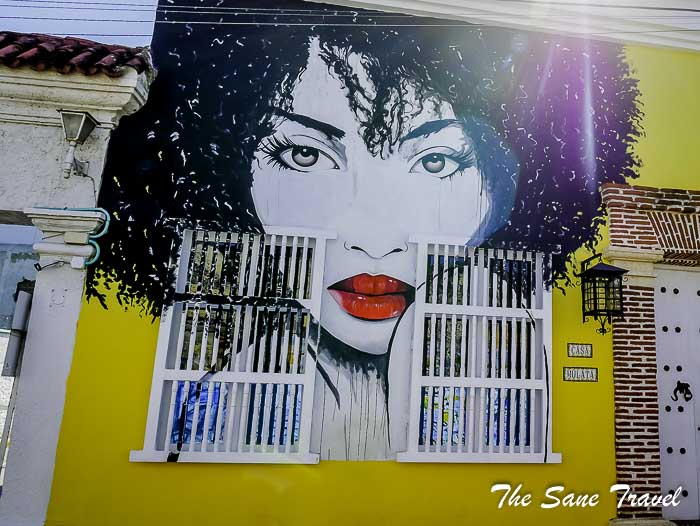
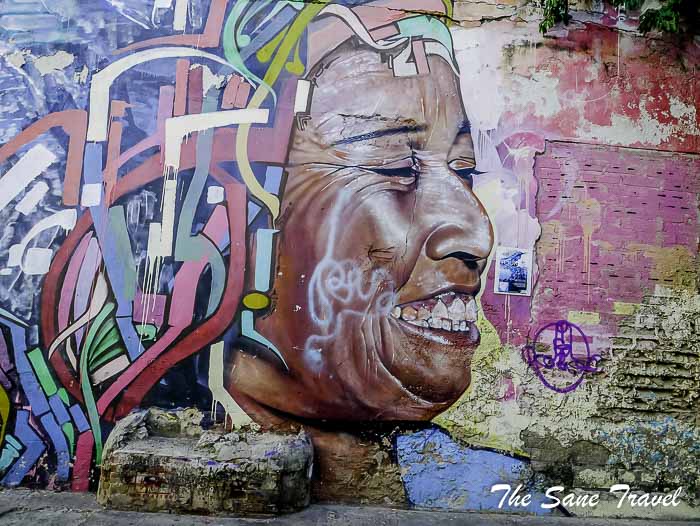
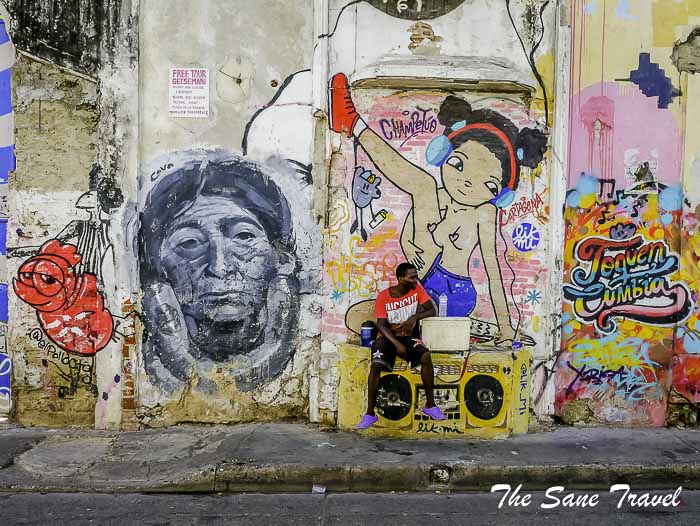 Soon you will reach the Holy Trinity Church.
Soon you will reach the Holy Trinity Church.
The Holy Trinity Church on the Plaza of Trinidad
Iglesia La Trinidad, or the Church of the Holy Trinity, was completed in the second half of the 17th century. The Regents of the Church built a school in the back courtyard for the poverty stricken youth of the community, which still serves the poor today. Next to the church is a statue of Pedro Romero from Cartagena, who in 1811 decried “Long live liberty!”, which became a slogan to kick off the revolution for becoming independent from Spain. 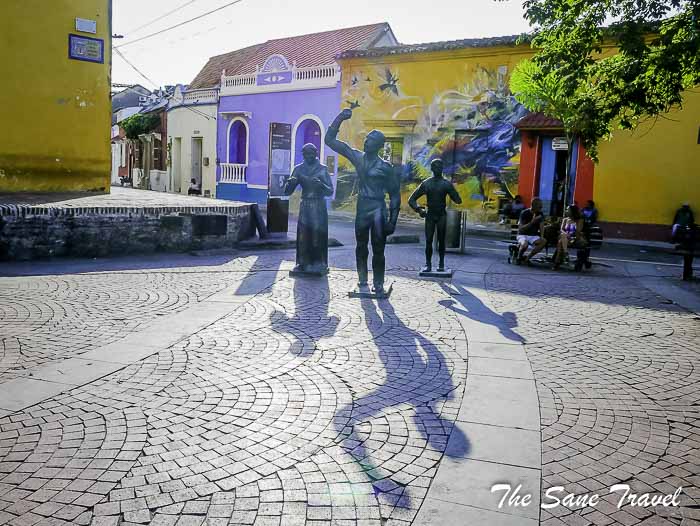 Notice also the street art on the walls of houses.
Notice also the street art on the walls of houses.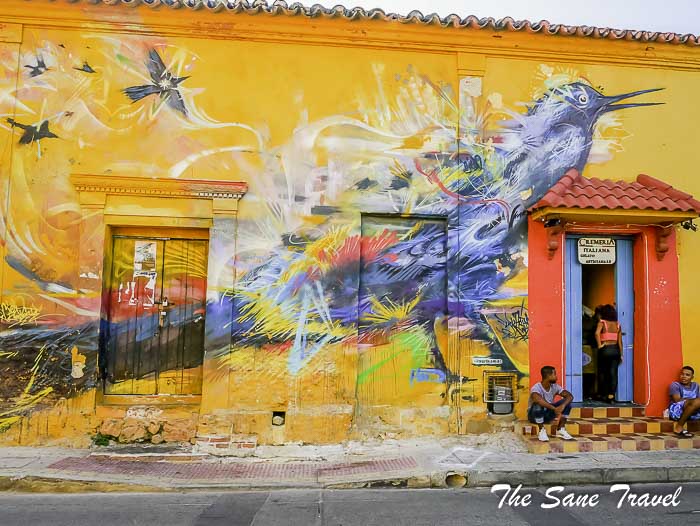 From the Plaza, continue to Carrera 10b to the Plazuela Del Pozo,and explore Calle 27 or Callejon Angosto or Umbrellas Street on the route.
From the Plaza, continue to Carrera 10b to the Plazuela Del Pozo,and explore Calle 27 or Callejon Angosto or Umbrellas Street on the route. 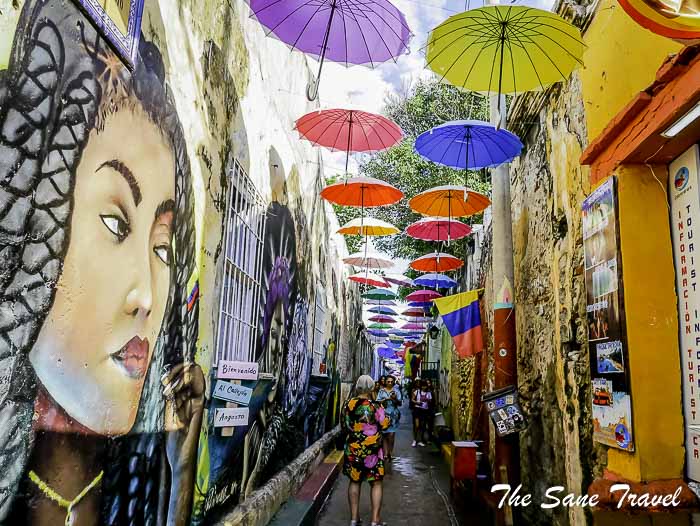 You must be hungry by now. Have a decent pizza at Basilica pizzeria at Calle 26. Maybe you want some cold beer too?
You must be hungry by now. Have a decent pizza at Basilica pizzeria at Calle 26. Maybe you want some cold beer too?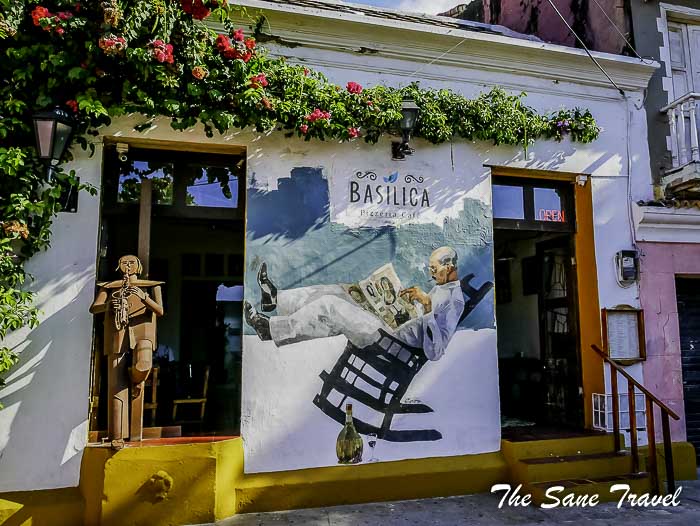
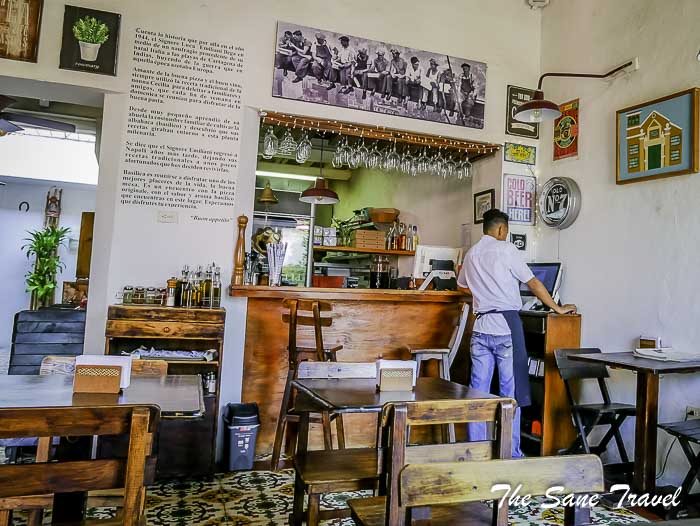 Then explore the murals and the art shop on Calle 25 at Casa Maravilha.
Then explore the murals and the art shop on Calle 25 at Casa Maravilha.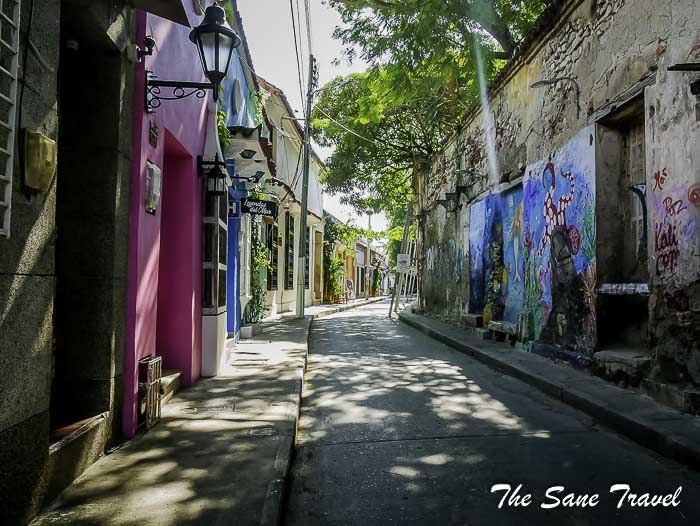
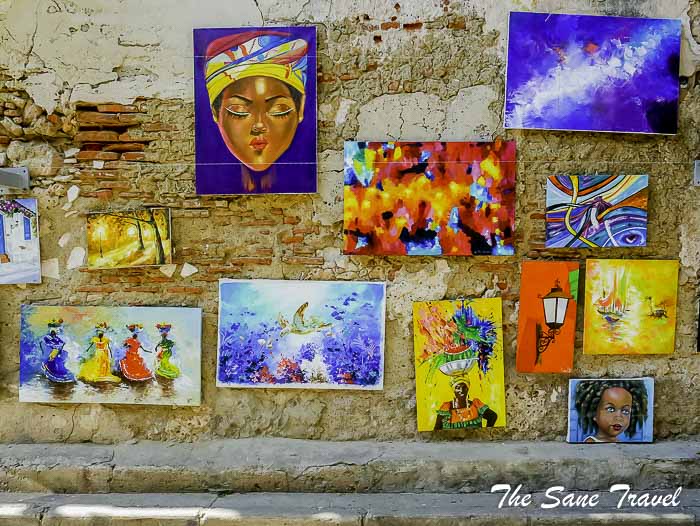
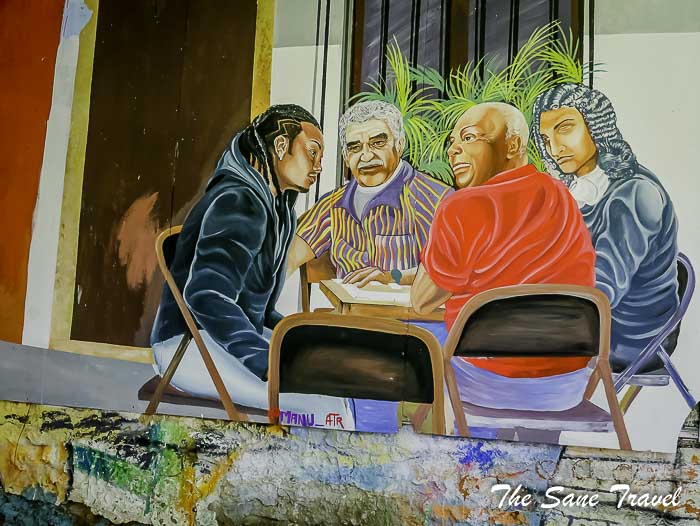 Do you still need some coffee? Look at this great place there!
Do you still need some coffee? Look at this great place there! 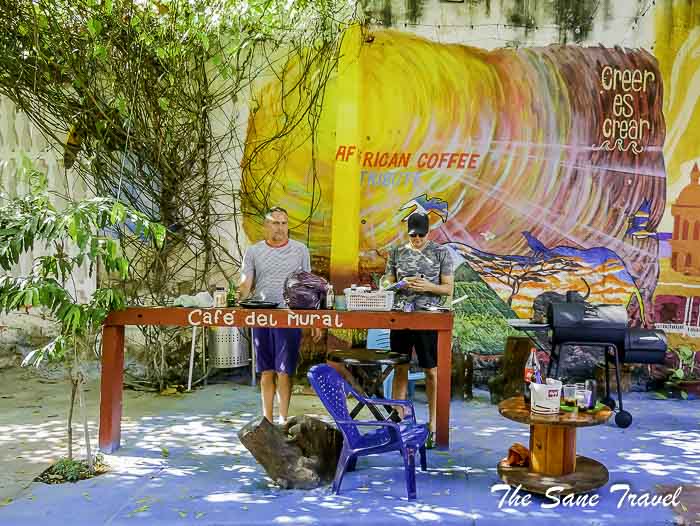 Afterwards, head back to the port to get ready for your Cartagena sunset boat tour.
Afterwards, head back to the port to get ready for your Cartagena sunset boat tour.
It’s an opportunity to see the city skyline from the boat in a relaxing atmosphere while sipping some cocktail or wine.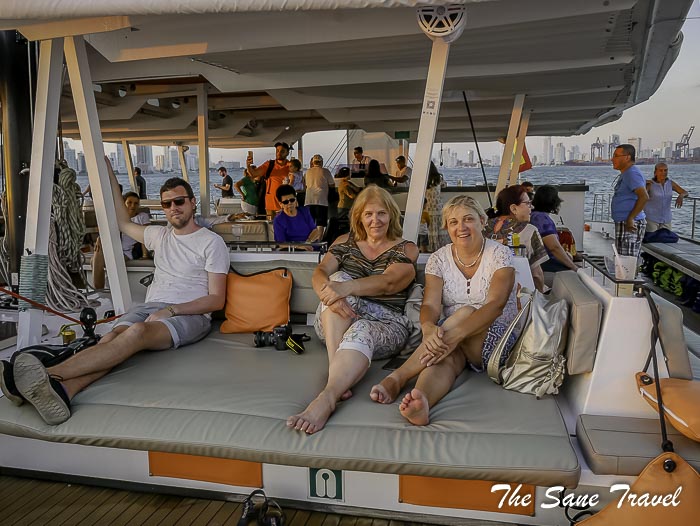
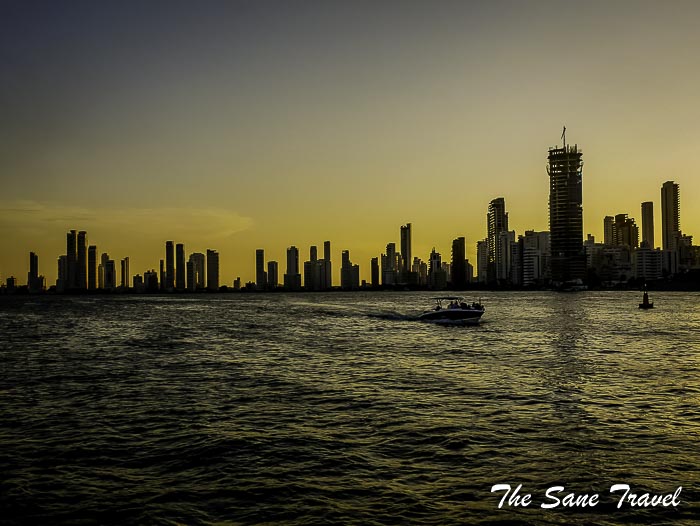
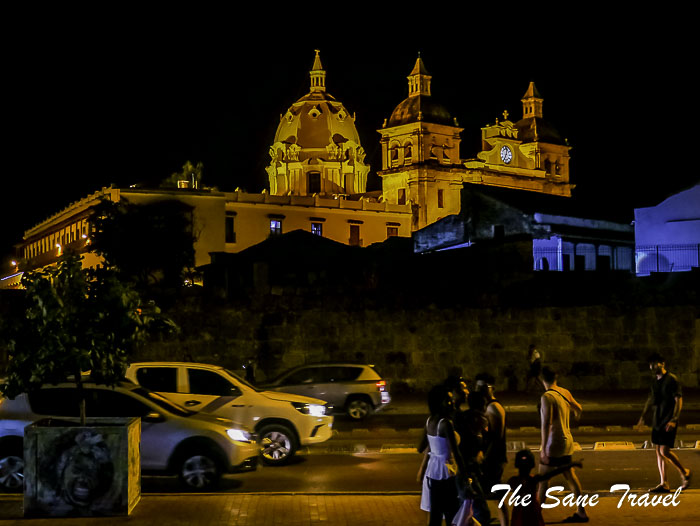 What a great day it has been!
What a great day it has been!
Practical information
While it’s true that you can enjoy Cartagena’s beautiful weather any time of year, the best time to visit is between the end of November and the end of April, since it rarely rains during this period.
Due to the tropical location, the temperature has little variation, with an average maximum of 31 ° C and an average minimum of 24 ° C. Cartagena also has an average humidity of 90%.
Getting around is easy, especially by taxi, since there aren’t any great distances between different tourist areas. Just agree on the price before you board a taxi to avoid disappointment later.
Sunglasses, a hat, light clothing and plenty of water will help you to survive in the heat.
Like it? Pin it?
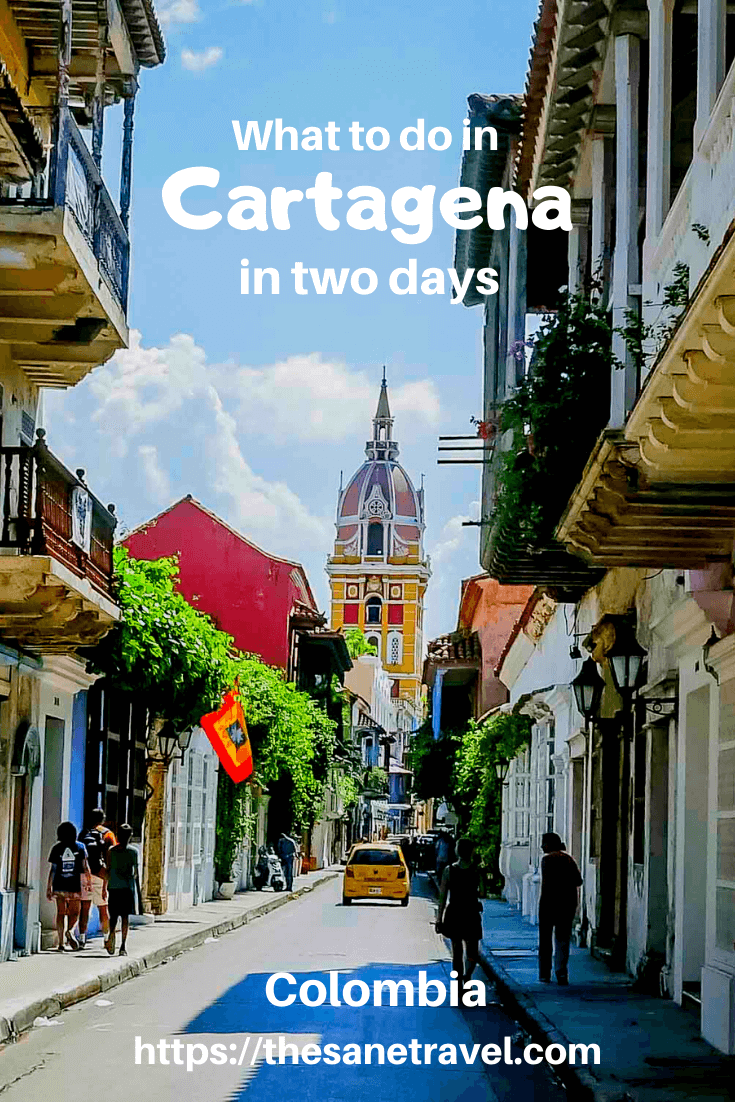
What did you think? Have you been to Cartagena, Colombia? Or perhaps you’re thinking of visiting in the near future? Either way, I’d love to hear from you so please add your comments below.
Author: Anita Sane
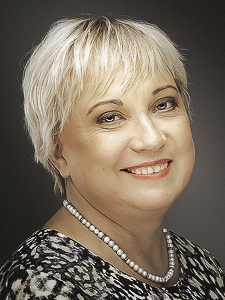
About the author
Anita is a part-time traveller, passionate photographer and a retired career woman from Latvia, travelling mostly solo for more than 15 years. She is a skilled travel planner who plans and executes her travels by herself. Anita wants to show you how to travel the world and open your mind to new experiences. Follow her on Facebook, Instagram, Pinterest, Twitter and Bloglovin.




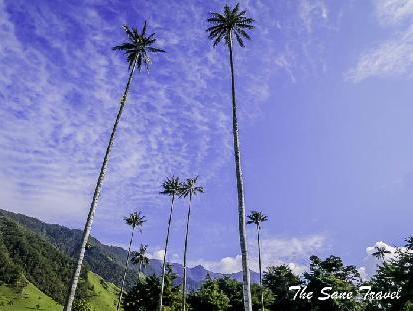




Report
My comments